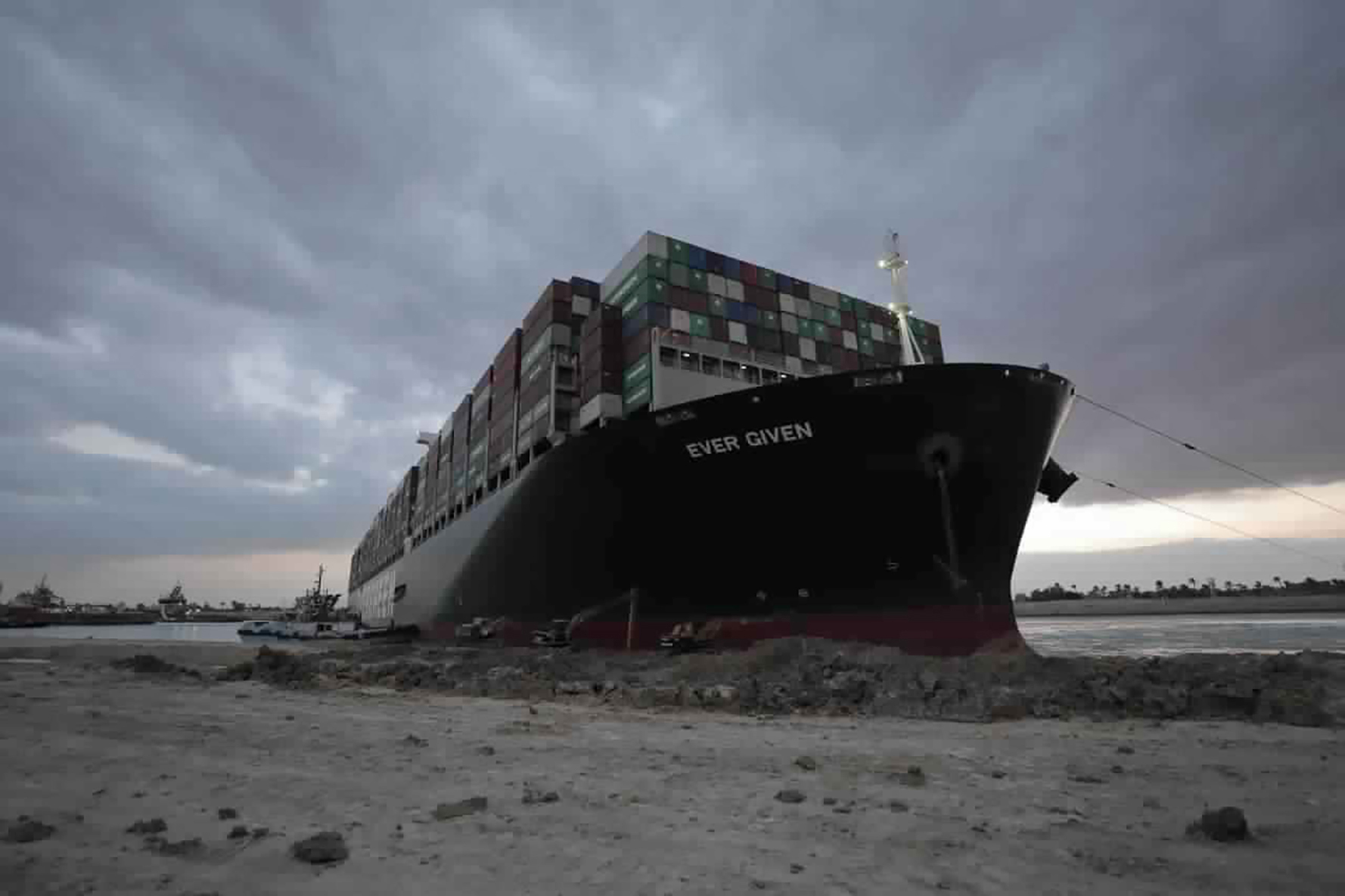On Tuesday, March 23, a giant container ship by the name of the Ever Given got itself lodged sideways in the Suez Canal, a vital shipping waterway. According to the Suez Canal Authority, the ship ran aground after getting caught in a sandstorm and 40-knot winds, causing low visibility for the ship’s operators. The Ever Given, a 224,000-ton, 400 meter-long ship, is currently blocking a shipping canal that services about 30% of the world’s shipping container volume and 12% of all global trade. It could take weeks to get it free, while about 50 ships per day become stuck in a traffic jam on either side of the ship.
Was it seriously always this easy to cripple the global trade network? Apparently the Ever Given only has a crew of 25 people—they’re all safe, don’t worry—and that single ship could force hundreds of other ships to take the long way around the Cape of Good Hope, a journey that takes two weeks longer than going through the Suez Canal.
A wonderful article in The Atlantic by staff writer Amanda Mull examines the history of “containerization” after World War II, while also making many colorful metaphors regarding the Ever Given and hangovers. “I’m obsessed with the dang boat,” she writes, “because people like me and you are not really supposed to be aware of what boats like her are up to.” The grounding of this big, dumb ship has made the infrastructure of global capital “cartoonishly noticeable,” leading to an explosion of memes about the incident. Simply put, we’re not supposed to notice stuff like this. Our entire system of global shipping and finance is, despite appearances to the contrary, extremely vulnerable to crises. Even if those crises come by way of a giant boat.
We’re all treating this like a joke, and rightly so. I mean, the boat drew a penis and a butt in the water before lodging itself sideways in a tiny canal! It’s objectively funny. But don’t let the cartoonishness of this moment distract from its genuinely revolutionary potential.
My first reaction when hearing this story was: “Wait a minute. Are you telling me all it took to devastate 12% of all global trade was a big ship with 25 people on it?” Well, my first reaction was actually to giggle like a little kid at the absurdity of everything, but you know, that was my second reaction.
Imagine the potential in a moment like this. The battle of Seattle? Cute. The 2000 Prague anti-IMF protests? Child’s play. To quote Portland-based journalist Robert Evans from Twitter, “[I]t’s probably worth noting that whoever stuck that boat in the suez canal probably did more damage to capitalism than the last couple decades of anti-capitalist protests.”
What would the ramifications be if a group of workers—say, from the Seafarers International Union or the International Longshore & Warehouse Union (ILWU)—decided to strike, perhaps by using similar tactics to disrupt the global maritime trade? If 12% of global trade passes through the Suez Canal alone, imagine what would happen if workers similarly blocked the Panama Canal; that canal accounts for 6% of global trade, the vast majority of which is either destined for or exported from the United States. In fact, what if maritime workers around the world demanded better working conditions and a slowdown of globalization? After all, it only took 25 people and one massive ship to block the Suez Canal, so how hard would it be to block other naval passageways at the same time? Workers around the world could bring the global economy to a halt in minutes.
Of course, I, the author of this article, am not suggesting that this should happen. I would never advocate for the near-total shutdown of the world economy in service of international workers’ rights and revolutionary struggle. All I’m saying is that we should look much more closely at the Suez Canal incident. It may seem like a joke now, and a pretty funny one at that. But it also reveals the possibilities of the future. Militant labor action often succeeds, like in the case of the 1937 maritime strike that led to the formation of the ILWU. If the workers of the world today were to “unite,” as it were, they could bring the foundation of global capital crumbling down in an instant. All it would take is a little push.


